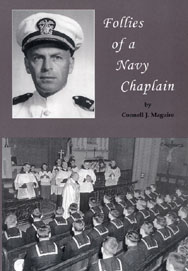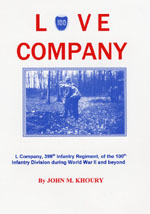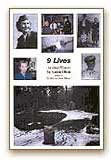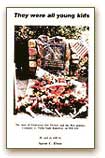Preface
On July 10, 1944, a platoon of four M4A3 Sherman tanks went to the aid of an infantry battalion that was surrounded by German paratroopers at the top of a hill in Normandy. The plan was for the tanks to lead one company of infantry -- about 150 men -- down the hill, with the rest of the battalion to follow through the gap.
It didn't work out that way. Following a furious battle to reach the base of the hill, the infantry company, which had suffered up to 80 percent casualties, dug in at the base of a hedgerow alongside a blacktop road. The tankers, unaware that they had lost most of their infantry support, continued across the road, entered a field and kept on going.
One of the tanks bogged down, and was soon hit by a shell from an anti-tank gun hidden in a corner of the field. The other three tanks kept going until they ran into a series of well-concealed artillery pieces and were all knocked out.
Lieutenant James Franklin Flowers Flowers, 30 years old, of Dallas, Texas, the platoon's leader, lost his right forefoot to the shell that penetrated his tank. When he managed to get out of the tank, after first pulling his badly burned gunner to safety, Flowers engaged in hand-to-hand fighting. And his ordeal was only beginning.
"They were all young kids" is the true story of Jim Flowers' platoon, as recounted, for the most part, by its survivors.
"As things turned out," says Titman, whose tank was destroyed in the battle for Hill 122 in Normandy with two of his crew members killed, "it certainly was."
Forrest Dixon, a former maintenance officer in the 712th Tank Battalion, is fond of quoting a documentary about the Normandy invasion as saying that Hill 122 was "the most expensive piece of real estate in World War II," in terms of casualties. In the 11-day battle that lasted from July 3 to July 13, the 90th Infantry Division suffered 7,000 casualties.
On July 10, 1944, the 3rd Battalion of the 358th Infantry Regiment was on the summit of Hill 122, which had a commanding view of Utah Beach to the east and of the road to St. Lo to the west. The battalion was cut off and surrounded by elite Nazi paratroopers. The call for help went to Lt. Jim Flowers, 30 years old, of Dallas Texas, leader of the first platoon in Company C of the 712th. Flowers had four tanks available, one of them the tank Titman recalls as being named Vulnerable. But memory sometimes plays tricks, and although the veterans' memories are all I have to go by, here is a possible scenario:
Judd Wiley of Seal Beach, California, who was a sergeant in Flowers’ platoon, remembers the day they named their tanks. It was back at Fort Benning, sometime in 1943, when what would later become Company C was still Company I of the 11th Armored Regiment in the 10th Armored Division. The tanks’ names were supposed to begin with the letter of the company. Thus, Wiley recalls, they were given names such as Indomitable, Invincible, Indestructible … and Invulnerable.
All of those dictionary words left Wiley’s own crew a little tongue-tied. Even Corporal Harold Gentle of Philadelphia, who had an IQ of 150 and a degree from LaSalle University, had difficulty suggesting a name. Fifty years later Wiley couldn't recall how the word popped into his mind, but he says he suddenly suggested: "Incinerator." As vulnerable as Invulnerable would turn out to be, the entire crew of Wiley's tank, with the exception of Wiley, who was evacuated due to injuries the day before, would burn to death inside their tank on the 10th of July, 1944.
When Louis Gerrard entered the service at New Cumberland, Pa., he said he’d like to go into the Army Air Force. At the Reading terminal, where Gerrard boarded the train to New Cumberland, Harold Gentle asked if the seat beside him was taken.
Gentle and Gerrard were buddies from that point on. Gentle got married while on a furlough in Philadelphia and wanted Gerrard to be his best man, but his fiancee wanted a cousin who was an ensign in the Navy. Gentle and his fiancee had quite an argument about it, Gerrard recalls. The fiancee won, and he was an usher at his buddy’s wedding.
Jim Flowers, a self-professed "big old country boy" from Texas, was 29 years old when he was assigned to the first platoon of Company C. He had a wife and a six-year-old daughter back in Dallas. Flowers grew up on a farm and worked in the Texas oil fields before becoming an engineer for the Magnolia Petroleum Company, which would later become a part of Mobil Oil.
When Pearl Harbor was attacked, Flowers announced to his wife, Jeanette, "You know I’m going."







